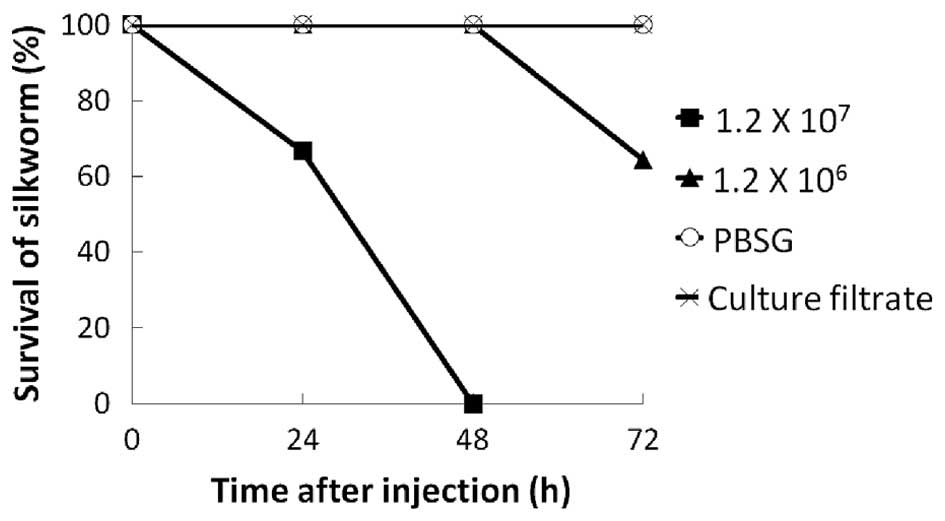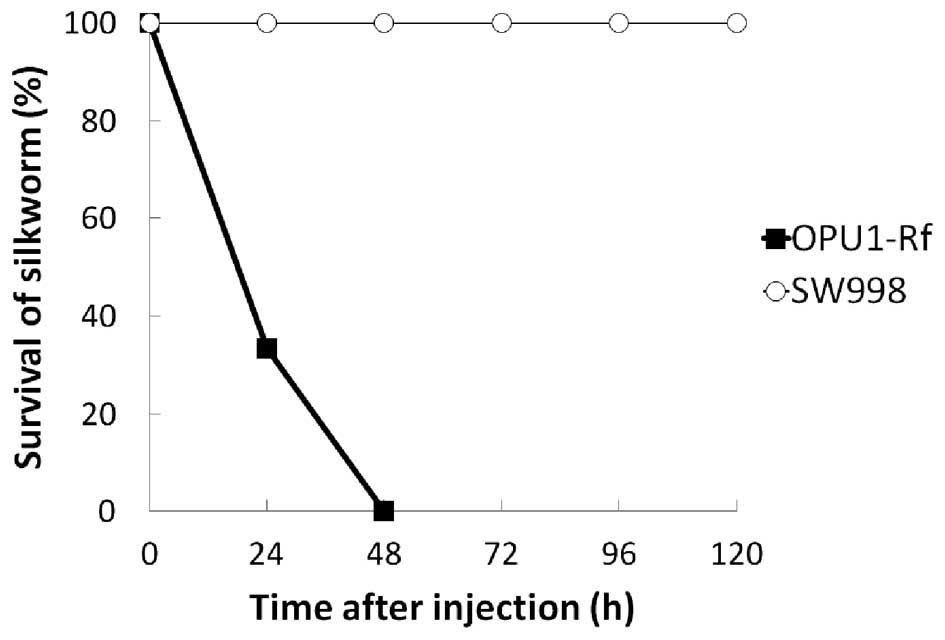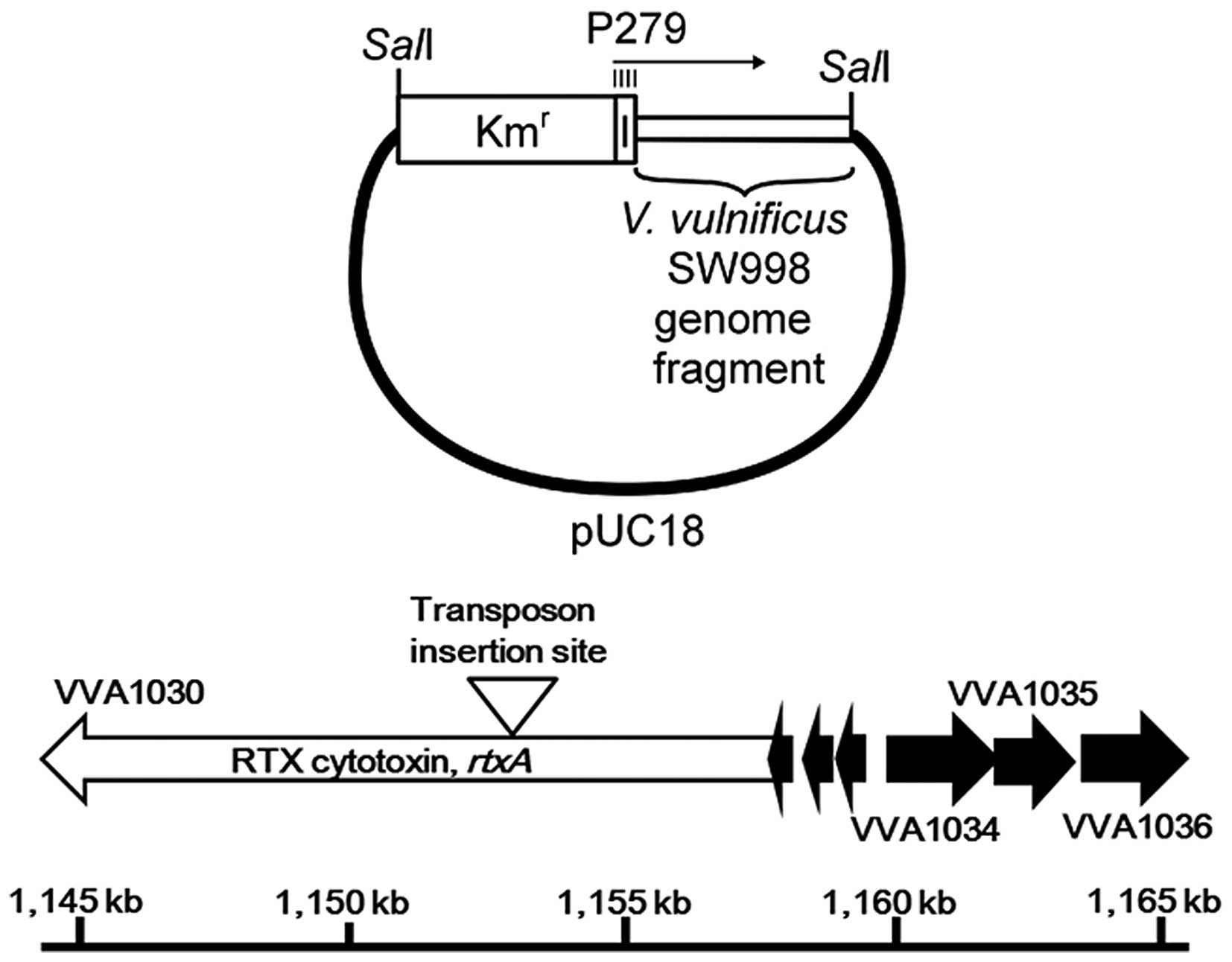|
1
|
de Araujo MR, Aquino C, Scaramal E, Ciola
CS, Schettino G and Machado MC: Vibrio vulnificus infection in São
Paulo, Brazil: Case report and literature review. Braz J Infect
Dis. 11:302–305. 2007. View Article : Google Scholar : PubMed/NCBI
|
|
2
|
Vinh DC, Mubareka S, Fatoye B, Plourde P
and Orr P: Vibrio vulnificus septicemia after handling Tilapia
species fish: A Canadian case report and review. Can J Infect Dis
Med Microbiol. 17:129–132. 2006.PubMed/NCBI
|
|
3
|
Horseman MA and Surani S: A comprehensive
review of Vibrio vulnificus: An important cause of severe sepsis
and skin and soft-tissue infection. Int J Infect Dis. 15:e157–e166.
2011. View Article : Google Scholar : PubMed/NCBI
|
|
4
|
Hlady WG and Klontz KC: The epidemiology
of Vibrio infections in Florida, 1981–1993. J Infect Dis.
173:1176–1183. 1996. View Article : Google Scholar : PubMed/NCBI
|
|
5
|
Miyasaka J, Yahiro S, Arahira Y, Tokunaga
H, Katsuki K and Hara-Kudo Y: Isolation of Vibrio parahaemolyticus
and Vibrio vulnificus from wild aquatic birds in Japan. Epidemiol
Infect. 134:780–785. 2006. View Article : Google Scholar : PubMed/NCBI
|
|
6
|
Osaka K, Komatsuzaki M, Takahashi H,
Sakano S and Okabe N: Vibrio vulnificus septicaemia in Japan: An
estimated number of infections and physicians' knowledge of the
syndrome. Epidemiol Infect. 132:993–996. 2004. View Article : Google Scholar : PubMed/NCBI
|
|
7
|
National Enteric Disease Surveillance, .
Centers for Disease Control and Prevention. Atlanta, Georgia, USA:
COVIS Annual Summary; 2012, https://www.cdc.gov/ncezid/dfwed/pdfs/covis-annual-report-2012-508c.pdf
|
|
8
|
Fouz B, Roig FJ and Amaro C: Phenotypic
and genotypic characterization of a new fish-virulent Vibrio
vulnificus serovar that lacks potential to infect humans.
Microbiology. 153:1926–1934. 2007. View Article : Google Scholar : PubMed/NCBI
|
|
9
|
Bier N, Bechlars S, Diescher S, Klein F,
Hauk G, Duty O, Strauch E and Dieckmann R: Genotypic diversity and
virulence characteristics of clinical and environmental Vibrio
vulnificus isolates from the Baltic Sea region. Appl Environ
Microbiol. 79:3570–3581. 2013. View Article : Google Scholar : PubMed/NCBI
|
|
10
|
Kreger A..Lockwood D: Detection of
extracellular toxin(s) produced by Vibrio vulnificus. Infect.
Immun. 33:583–590. 1981.
|
|
11
|
Miyoshi S, Oh EG, Hirata K and Shinoda S:
Exocellular toxic factors produced by Vibrio vulnificus. J Toxicol
Rev. 12:253–288. 1993.
|
|
12
|
Powell JL, Wright AC, Wasserman SS, Hone
DM and Morris JG Jr: Release of tumor necrosis factor alpha in
response to Vibrio vulnificus capsular polysaccharide in vivo and
in vitro models. Infect Immun. 65:3713–3718. 1997.PubMed/NCBI
|
|
13
|
Jeong HG, Oh MH, Kim BS, Lee MY, Han HJ
and Choi SH: The capability of catabolic utilization of
N-acetylneuraminic acid, a sialic acid, is essential for Vibrio
vulnificus pathogenesis. Infect Immun. 77:3209–3217. 2009.
View Article : Google Scholar : PubMed/NCBI
|
|
14
|
Hor LI, Chang YK, Chang CC, Lei HY and Ou
JT: Mechanism of high susceptibility of iron-overloaded mouse to
Vibrio vulnificus infection. Microbiol Immunol. 44:871–878. 2000.
View Article : Google Scholar : PubMed/NCBI
|
|
15
|
Bae T, Banger AK, Wallace A, Glass EM,
Aslund F, Schneewind O and Missiakas DM: Staphylococcus aureus
virulence genes identified by bursa aurealis mutagenesis and
nematode killing. Proc Natl Acad Sci USA. 101:12312–12317. 2004.
View Article : Google Scholar : PubMed/NCBI
|
|
16
|
Seed KD and Dennis JJ: Development of
Galleria mellonella as an alternative infection model for the
Burkholderia cepacia complex. Infect Immun. 76:1267–1275. 2008.
View Article : Google Scholar : PubMed/NCBI
|
|
17
|
Mylonakis E and Aballay A: Worms and flies
as genetically tractable animal models to study host-pathogen
interactions. Infect Immun. 73:3833–3841. 2005. View Article : Google Scholar : PubMed/NCBI
|
|
18
|
Kaito C, Kurokawa K, Matsumoto Y, Terao Y,
Kawabata S, Hamada S and Sekimizu K: Silkworm pathogenic bacteria
infection model for identification of novel virulence genes. Mol
Microbiol. 56:934–944. 2005. View Article : Google Scholar : PubMed/NCBI
|
|
19
|
Metcalf WW, Jiang W and Wanner BL: Use of
the rep technique for allele replacement to construct new
Escherichia coli hosts for maintenance of R6K gamma origin plasmids
at different copy numbers. Gene. 138:1–7. 1994. View Article : Google Scholar : PubMed/NCBI
|
|
20
|
Hensel M, Shea JE, Gleeson C, Jones MD,
Dalton E and Holden DW: Simultaneous identification of bacterial
virulence genes by negative selection. Science. 269:400–403. 1995.
View Article : Google Scholar : PubMed/NCBI
|
|
21
|
Sambrook J and Russell DW: Molecular
Cloning: A laboratory manual. Cold Spring Harbor Laboratory Press,
Cold Spring Harbor; New York: 3. Appendix 2.2. 2001
|
|
22
|
Hamamoto H, Kurokawa K, Kaito C, Kamura K,
Razanajatovo I Manitra, Kusuhara H, Santa T and Sekimizu K:
Quantitative evaluation of the therapeutic effects of antibiotics
using silkworms infected with human pathogenic microorganisms.
Antimicrob Agents Chemother. 48:774–779. 2004. View Article : Google Scholar : PubMed/NCBI
|
|
23
|
Yamamoto M, Kashimoto T, Tong P, Xiao J,
Sugiyama M, Inoue M, Matsunaga R, Hosohara K, Nakata K, Yokota K,
et al: Signature-tagged mutagenesis of Vibrio vulnificus. J Vet Med
Sci. 77:823–828. 2015. View Article : Google Scholar : PubMed/NCBI
|
|
24
|
Lee JH, Kim MW, Kim BS, Kim SM, Lee BC,
Kim TS and Choi SH: Identification and characterization of the
Vibrio vulnificus rtxA essential for cytotoxicity in vitro and
virulence in mice. J Microbiol. 45:146–152. 2007.PubMed/NCBI
|
|
25
|
Saenz HL and Dehio C: Signature-tagged
mutagenesis: Technical advances in a negative selection method for
virulence gene identification. Curr Opin Microbiol. 8:612–619.
2005. View Article : Google Scholar : PubMed/NCBI
|
|
26
|
Kaito C, Akimitsu N, Watanabe H and
Sekimizu K: Silkworm larvae as an animal model of bacterial
infection pathogenic to humans. Microb Pathog. 32:183–190. 2002.
View Article : Google Scholar : PubMed/NCBI
|
|
27
|
Tanaka H and Yamakawa M: Regulation of the
innate immune responses in the silkworm, Bombyx mori. ISJ. 8:59–69.
2011.
|
|
28
|
Kim YR, Lee SE, Kook H, Yeom JA, Na HS,
Kim SY, Chung SS, Choy HE and Rhee JH: Vibrio vulnificus RTX toxin
kills host cells only after contact of the bacteria with host
cells. Cell Microbiol. 10:848–862. 2008. View Article : Google Scholar : PubMed/NCBI
|












